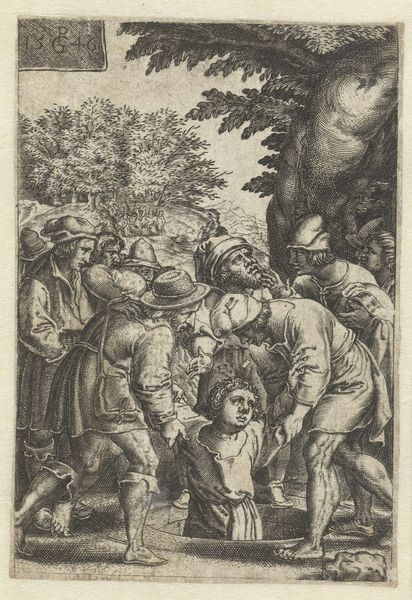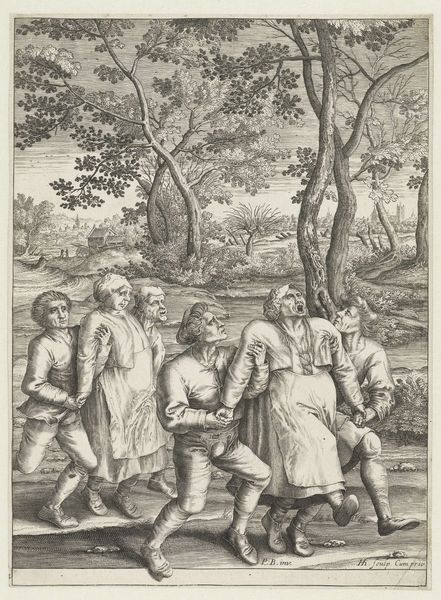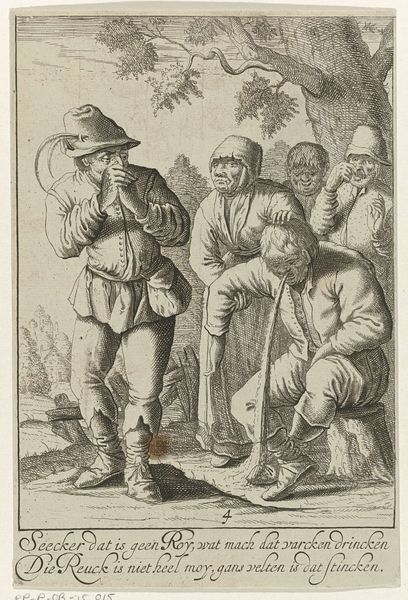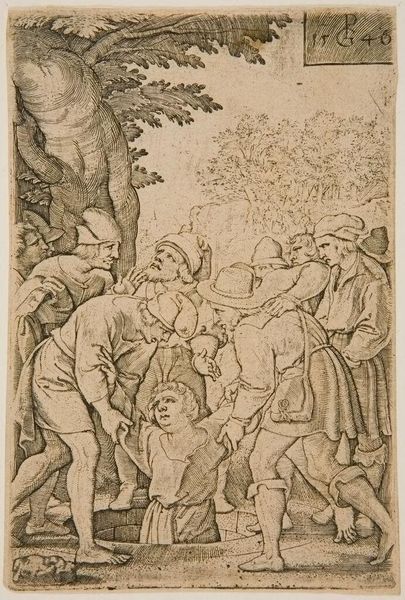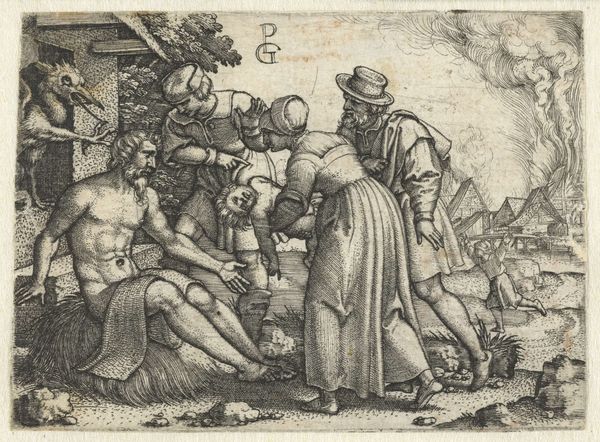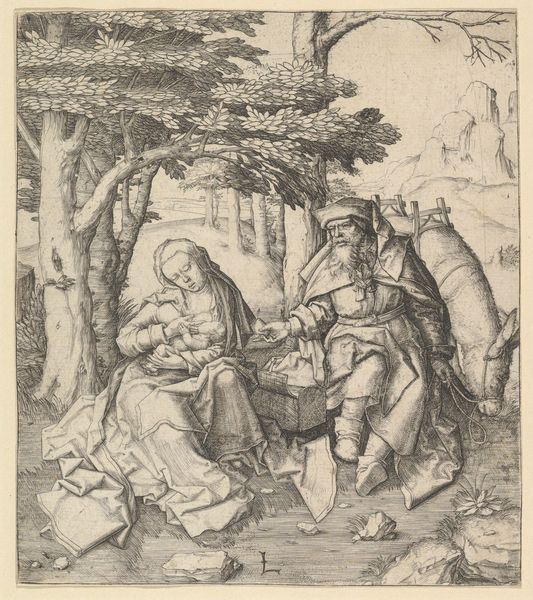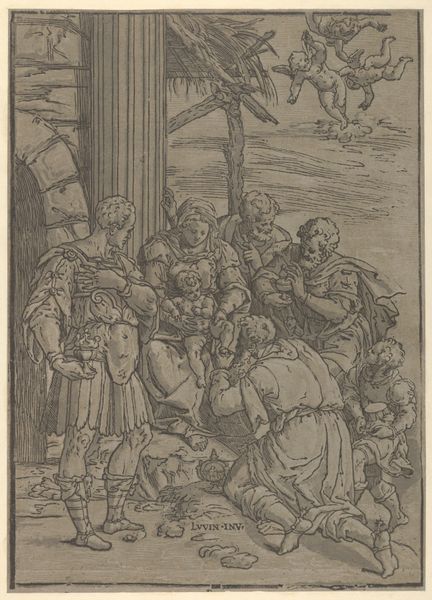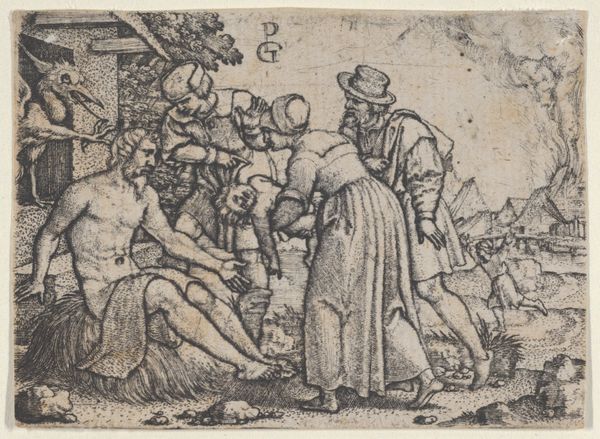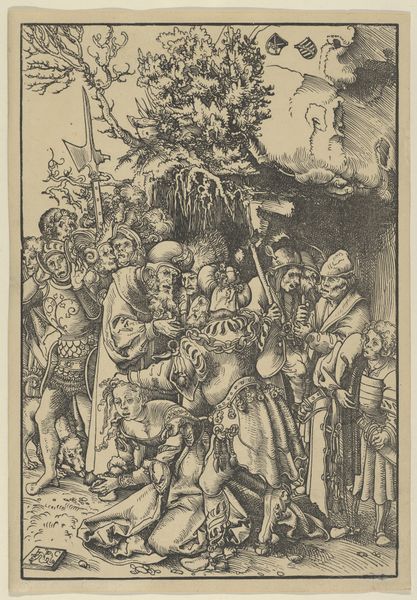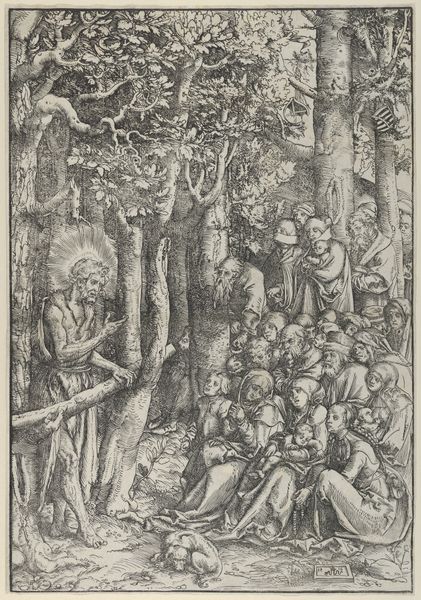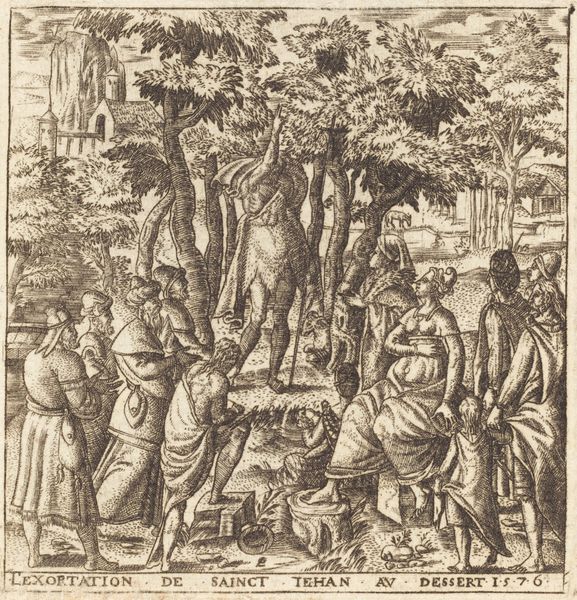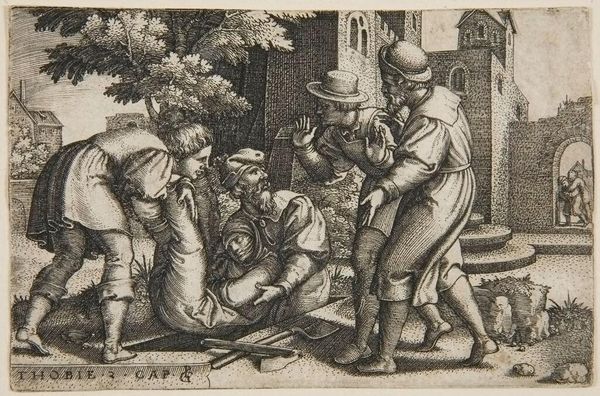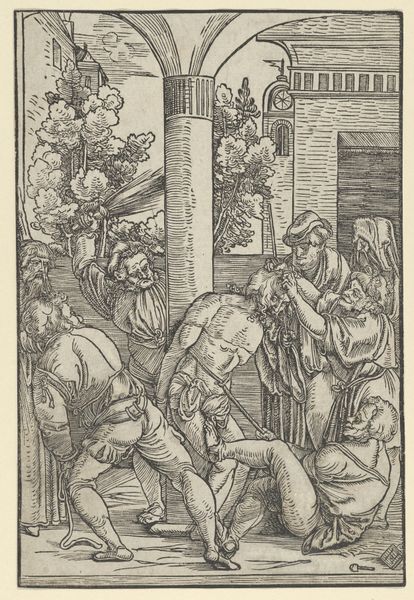
Joseph lowered into a well by his brothers, from the series 'The Story of Joseph' 1546
0:00
0:00
drawing, print, intaglio, engraving
#
drawing
#
narrative-art
# print
#
intaglio
#
figuration
#
history-painting
#
northern-renaissance
#
engraving
Dimensions: sheet: 4 5/16 x 2 15/16 in. (11 x 7.5 cm)
Copyright: Public Domain
Editor: This is "Joseph lowered into a well by his brothers," an engraving by Georg Pencz from 1546, part of 'The Story of Joseph' series. It's a pretty stark image, with all these figures crowding around a central well. What jumps out at you about it? Curator: What strikes me is the portrayal of brotherhood here, a deeply fraught concept throughout history. Think about the power dynamics embedded in this narrative. This isn’t just about sibling rivalry; it speaks to larger issues of inheritance, jealousy, and the oppression of those deemed ‘different’. How do you read Joseph’s expression in relation to that context? Editor: He looks resigned, almost. Like he expected this kind of betrayal. Curator: Precisely. And consider Pencz was working in the midst of the Reformation, a time of immense social and religious upheaval. This story of betrayal and unjust persecution would have resonated deeply with audiences experiencing their own forms of marginalization and violence. Is Joseph a symbol of the persecuted, perhaps mirroring the challenges to religious authority during that time? Editor: That's an interesting point! I hadn't considered the parallels with the Reformation. Curator: Look closely at the clothing. Does it read as purely historical, or could there be contemporary elements reflecting the attire of 16th-century Germany? Pencz isn’t just illustrating a biblical story; he’s placing it within a specific cultural moment, subtly commenting on the power structures of his own society. What does it mean to tell a biblical story and have it be interpreted differently for centuries on? Editor: So it’s not just about the literal event, but about how Pencz, and we, interpret power, betrayal, and injustice through this historical lens. That connection to contemporary audiences makes the story even more powerful. Curator: Exactly! And by examining the work through lenses of historical context and power dynamics, we can glean deeper understanding of both Pencz's intent and the artwork's enduring relevance. Editor: I see so much more in this piece than I initially did. It’s not just a scene from the Bible; it's a reflection of societal anxieties and a commentary on power.
Comments
No comments
Be the first to comment and join the conversation on the ultimate creative platform.
